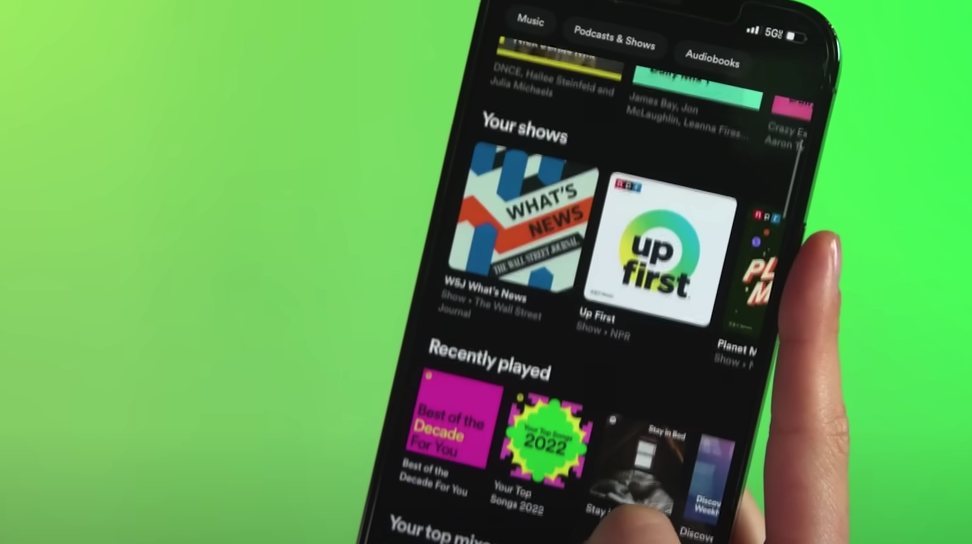Spotify Algorithm - how it works.
In the following, we will take a deeper look into how its core technology, its algorithm, recommends music to subscribers.

With 500M monthly users, Spotify is the most widely used music streaming service, and the most hotly debated company among musicians, music industry professionals and music lovers. In the following, we will take a deeper look into how its core technology, its algorithm, recommends music to subscribers.
Spotify is known for its personalized playlists which rely on both data from its users (Called "Raw Materials") and artificial intelligence. Spotify is by no means the first company to ever give music recommendations to its users, however the way they do this is unprecedented and makes their suggestions more life-like.
In 2014
Spotify acquired Echo Nest a music analytics firm that leveraged machine learning and Natural language processing to build its database of artists and songs and marked an important step in the evolution of its technology. So how does it work? We've broken it down for you in a few steps below:
Collaborative Filtering (Mapmaking)
Collaborative Filtering identifies patterns across all of Spotify's data in an effort to understand when two tracks are playlisted together and how frequently. In a way, they are building a map of music and podcasts with the help of users who themselves build playlists. If two songs are frequently placed on the same playlists, then this notifies Spotify that they "belong" together and are therefore closer to one another on the figurative map. On the other hand, if song X and song Y are rarely playlisted together, they will then be farther away from each other on the map and someone listening to song X will not likely be recommended song Y.
Recommendations based solely on Collaborative Filtering are not always accurate, however. For instance, take Mariah Carey's "All I Want for Christmas is You," and Bing Crosby's "Silent Night." It would not make sense if someone listening to a Mariah-inspired playlist to suddenly have a Christmas song begin to play - this is why they use another analytics tool called..
Content-Based Filtering
This algorithm gathers meta data and executes a raw-audio analysis, using metrics such as "danceability, energy, loudness, mode" (and many, many more) to describe the sonic characteristics of a given track. Spotify will also analyze the temporal structure of songs, namely sections, bars, beats, and segments as well as cultural context by searching through lyrics and adjectives used in online press such as in articles and blogs describing a track.
This method of analysis is not unique to Spotify, however with its mass user base they can collect data at unprecedented speed and with unparalleled accuracy with the goal of creating new products.
Of course, there are potential issues related to using these algorithmic tools, here are a few examples:
Feedback Loop
Similar to algorithms deployed by the likes of TikTok and Instagram, these algorithms function on their understanding of what a given user interacts with (likes, shares, playlists additions, etc.) and spends the most time consuming. Therefore, it is in the algorithm's interest to feed users content that they know they will spend time with (i.e. content they will like). The issue here is that discovering new music and genres will not likely come based off an algorithms suggestions since it will be more successful by simply reinforcing pre-existing preferences.
Cold Start Problem
Data is the most important fuel for algorithms. When a new artist uploads music on Spotify for the first time, the algorithm has no data on the artist or song. What this means is that this song will likely not be recommended to listeners even though many users may appreciate the artist or their music. The main problem with this is that pre-established artists and music has an even greater advantage over newcomers than previously thought.
Cultural Bias
The encompassing culture in which a technology is created is the lens in which is perceives data, in this case, music. Meaning, that world music that is not native to the Western culture is often mislabelled and therefore not recommended appropriately.
Want to find out more about this topic, here's a recent video from the Wall Street Journal:

GigLinked is the new Live Music Marketplace aiming to facilitate live-music bookings for musicians and event organisers alike. Musicians can create their free profiles now at www.giglinked.live.



